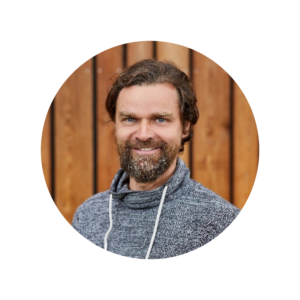Nature restoration in Europe
Nature Restoration in Europe
Restoring what was lost, monitoring what we restore
Following the European Green Deal (EGD) and the Convention of Biological Diversity (CBD), countries are obliged to report on their efforts to maintain and restore areas of high biological diversity. This will be further emphasized by the upcoming “EU Nature Restoration Law”, which sets overarching objectives for ecosystem restoration and binding targets.
This webinar looked at three important elements of nature restoration: policy, restoration activities and practices, and how to gather data on the success of these activities. Participants discovered examples of active restoration methods that turn degraded areas into resilient ecosystems through a case study from The Netherlands.
Furthermore, we looked at a transparent monitoring system using Earth Observation (EO) data to support the National Restoration Plan for Austria.
The webinar was facilitated by the Managing Director of the EUROPARC Federation Federico Minozzi, who also provided further insights into the Nature Restoration policy framework.
Download the presentation here
RestorEO
By Daniel Wuttej of E.C.O
Reporting on nature restoration requires a quantitative, objective, transparent and reproducible monitoring concept. Currently, sample points based monitoring is the standard. Apart from being costly and time-consuming, it is hard to create reliable conclusions based on this method.
RestorEO will develop EO-based tools to generate wall-to-wall information for quantitative monitoring of the status of important ecosystems like forests, wetlands and grassland-dominated cultural landscapes. Discover this approach during the webinar, which follows the current working document of the DG-Environment of the EU Commission on legally binding restoration targets.
Download the presentation here
Creating resilient ecosystems in the Netherlands
By Myrthe Fonck of PWN
PWN manages a Natura 2000 dune area in proximity to densely populated areas. Nitrogen deposition and high recreation numbers are pressing challenges. The aim of their nature management activities is to restore natural processes in order to increase the resilience of the ecosystems. By transforming former agricultural lands in the inner dunes to nature areas with space for recreation and water storage, pressure on the dune ecosystem is relieved. The (re)introduction of natural grazers in the area restores grazing regimes and counteracts vegetation overgrowth caused by nitrogen deposition.
Download the presentation hereInteresting links shared during the webinar:
- Learn more about the LIFE ENABLE project
- Listen to the EUROPARC Podcast: Dynamic dune management to improve biodiversity
- Questionnaire on Protected Areas management
- Activating socio-cultural values for sustainable tourism development in natural Protected Areas
- Example of habitat reconstruction in Italy – Pantanello Park
More about our speakers!

Myrthe Fonck works as Strategy Advisor Nature for PWN, Netherlands. She has a background in ecology and is mainly involved in long term strategy and planning related to nature conservation, climate change issues and future-proofing drinking water sources.

Daniel Wuttej has studied in Vienna, Florence and Ljubljana. After that he worked for several years as project manager and vegetation ecologist in consultant offices in Vienna and Klagenfurt, e.g. mapping Austrian alluvial forests with Alnus glutinosa and Fraxinus excelsior for the EU Habitats Directive. As former GIS-Tutor at the University of Applied Life Sciences in Vienna he also has an excellent knowledge of GIS-Software.
Since 2017 he works at E.C.O. in the field of vegetation monitoring, habitat mapping, ornithology and modelling ecosystem services. He speaks German, Slovenian, English and Italian.